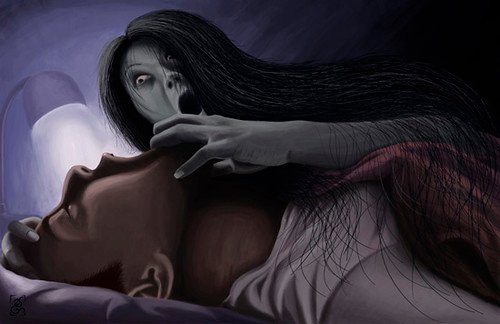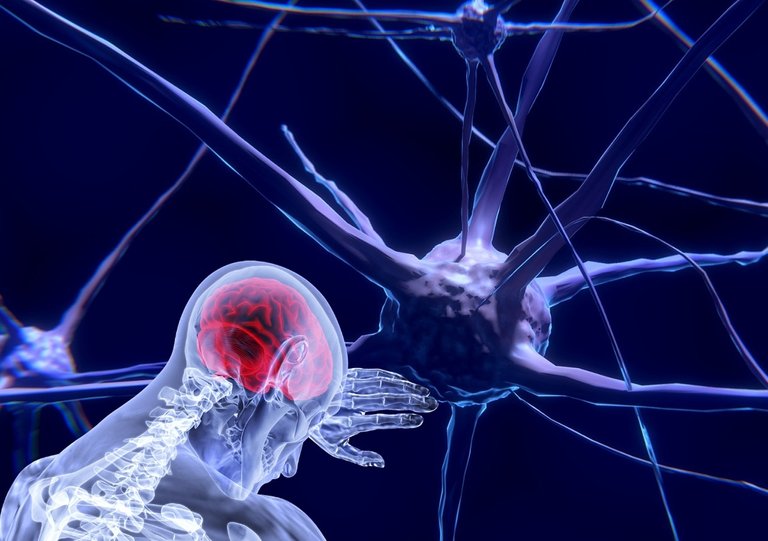A Deep Dive into Its Intricate Mechanisms of Sleep Paralysis
For a lot of us, we have had this experience where we wake up but cannot move because there is a demon-like figure on our chest preventing us from talking or holding our breath. This is a legitimate possibility for over 7% of he human population, and it is known as sleep paralysis. So in this post, I will be writing about what happens to the body during sleep paralysis.
Sleep paralysis falls under the umbrella of sleep disorders known as Parasomnia, sharing space with other disorders like Sleepwalking, Nocturnal Seizures, and night terrors. Specifically, sleep paralysis is categorized as a rapid eye movement (REM) parasomnia. Understanding REM sleep is crucial, as it's the stage where dreams unfurl with rapid eye movements beneath closed eyelids.

flickr
During REM sleep, the skeletal muscles remain atonic, rendering them temporarily immobile. This intentional paralysis prevents us from physically acting out our dreams, sparing us from inadvertently throwing punches or engaging in dream-related movements. Neurotransmitters such as acetylcholine, glycine, GABA, norepinephrine, and serotonin dance in a delicate balance during REM sleep, creating a brain state that mimics wakefulness and deep sleep at different intervals.
With a distortion in the activity of the upper motor neuron, acetylcholine cannot be released from the spinal nerves making the muscle not to contract but then sleep paralysis occur when transitioning out of a REM sleep. When the muscles are unable to move, GABA and Glycine are the primary neurotransmitters during REM as they hyperpolarize motor neurons preventing them from sending signals to skeletal muscles in the body and when transitioning out of REM sleep, GABA and Glycine levels decreases in the brain causing the muscles to contract but if the brain is the wakeful state with high GABA and Glycine in the brain, then the muscles will be unable to contract.
The state where one is neither sleeping nor awake is what is needed to hallucinate as hypnogogic hallucination can happen when a person is falling asleep while hypnopompic hallucinations occur when one is waking up. These hallucinations can be visual, auditory, or tactile. Being stressed, tired or taking certain medications are known to be associated with hallucinations but while it can be harmless, it becomes very disturbing when it happens with sleep paralysis.
People always feel chest pressure when experiencing sleep paralysis and this is expected being that breathing is erratic during REM sleep compared to non-REM sleep but the volume air going to the lungs is decreased.
Sleep paralysis takes us through the intricate functions of neurotransmitters, the delicate balance between wakefulness and sleep, and a combination of hypnagogic and hypnopompic hallucinations. When next you experience sleep paralysis, be sure to relax, and let your brain balance the neurotransmitters that causes it.
Reference
- https://jps.biomedcentral.com/articles/10.1007/s12576-016-0442-7
- https://www.ncbi.nlm.nih.gov/books/NBK11084/
- https://fineusatrading.com/products/glycine-gaba-ltheanine-sleep-well-drinks
- https://www.ncbi.nlm.nih.gov/pmc/articles/PMC3026477/
- https://www.ncbi.nlm.nih.gov/pmc/articles/PMC3119826/
- https://www.ncbi.nlm.nih.gov/books/NBK562322/
- https://stanfordhealthcare.org/medical-conditions/sleep/nighttime-sleep-behaviors/sleep-paralysis.html
- https://www.ncbi.nlm.nih.gov/pmc/articles/PMC10078162/
https://www.nhs.uk/conditions/narcolepsy/

Thanks for your contribution to the STEMsocial community. Feel free to join us on discord to get to know the rest of us!
Please consider delegating to the @stemsocial account (85% of the curation rewards are returned).
Thanks for including @stemsocial as a beneficiary, which gives you stronger support.